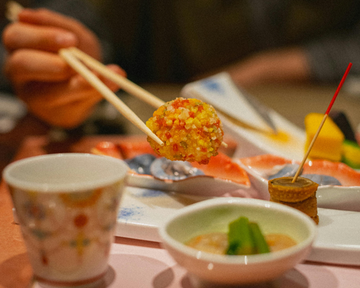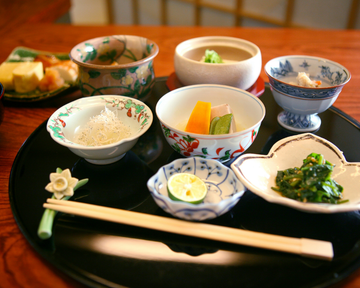Understanding umami—that savoury, mouth-filling "fifth taste"—is essential to grasping Japanese cuisine. The Japanese chemist Kikunae Ikeda first identified it in 1908 while studying what made dashi so delicious. He isolated glutamic acid from kombu and realised this was a distinct taste beyond sweet, sour, salty, and bitter.
These ingredients are your toolkit for achieving proper umami depth:
Dashi
Dashi is the soul of Japanese cooking, a delicate stock that underpins everything from miso soup to simmered dishes, from the broth for udon to the base for chawanmushi (savoury egg custard). Unlike Western stocks that simmer for hours, traditional dashi takes mere minutes—it's all about extracting pure umami without any muddiness.
Traditional Dashi-Making (For Context)
Proper ichiban dashi (first dashi) involves steeping kombu in water just below boiling, removing it before the water boils (to avoid bitterness), bringing it to a full boil, adding katsuobushi, immediately turning off the heat, and straining once the flakes sink. The whole process takes perhaps 10 minutes. This produces an incredibly clear, refined stock.
Niban dashi (second dashi) reuses those ingredients with fresh water, simmering longer for a heartier stock used in simmered dishes where clarity matters less.
Practical Alternatives for Home Cooks
Whilst fresh dashi is ideal, practical alternatives exist that give excellent results:
Dashi Powder (Dashi no Moto) - Instant granules you whisk into hot water. Brands like Ajinomoto, Shimaya, or Kayanoya are common. Look for ones listing katsuobushi (bonito) and kombu as primary ingredients rather than excessive MSG or artificial flavourings. One teaspoon typically makes 200ml of stock. The flavour is more concentrated and slightly less subtle than fresh dashi, but it's convenient and consistent.
Dashi Packets - Tea-bag style sachets you steep in hot water, offering more authentic flavour than powder. These contain actual dried kombu and katsuobushi. Simply simmer for 3-5 minutes then remove. Brands like Yamaki produce these. They're brilliant for busy weeknights whilst still giving relatively traditional flavour.
Kombu Dashi Powder - For vegetarian cooking, this kelp-based version provides umami without fish. It's slightly more mineral-tasting and less complex, but perfectly acceptable for vegetarian miso soup or simmered vegetables. Some versions combine kombu with dried shiitake for added depth.
Awase Dashi - "Combined dashi" packets or powder that include both kombu and katsuobushi, giving you balanced umami in one product.




